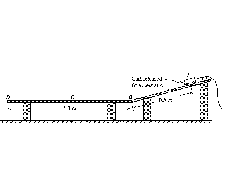
Velocity
Variant i Dynamics first
This tutorial covers the concepts of average and instantaneous velocity in one dimension. Students are led to an interpretation of speed.
Topics Mechanics / Kinematics: limits, operational definitions, proportional reasoning, rates of change, representations, verbal interpretations, and velocity
Materials
Materials by the UW team
- Instructor Guide


- Pretest


- Exam Questions



- Equipment List

Tutorial details
This tutorial focuses on helping students develop an operational definition and an interpretation for velocity in one dimension. (By operational definition is meant a sequence of steps that can be used to measure a particular quantity.) Subsequent tutorials address student difficulties related to graphical representations of motion (Representations of motion) and vector representations (Motion in two dimensions).
Students examine small pieces of ticker tape and find that the motion represented on each segment appears essentially uniform. As part of a brief class discussion, students in the entire tutorial section compare tape segments. They are led to recognize that their segment is part of a larger, non-uniform motion. Students are often surprised by the result that the motion appears uniform in a small time interval. Subsequent questions on the worksheet help students to clarify the distinction between average and instantaneous speed. For many, this exercise is the first time a connection is made between the limiting procedure they have learned in calculus and a real- world situation. Through discussion with their partners and tutorial staff, students come to recognize how to measure and interpret instantaneous velocity.
For instruction tips, login or register as a verified educator to see the Instructor Guide.
Prerequisites
Prerequisite tutorials
The Conservation of momentum in two dimensions tutorial is a prerequisite to Velocity.
Other prerequisites
None, although it is anticipated that some students will have studied kinematics previously. Students without experience in Tutorials in Introductory Physics may spend much of this first tutorial learning to explain their reasoning and to interpret algebraic quantities.
Equipment
Special Instructions
Special equipment (enough for class of 24):
- 24 ticker tape segments
- 24 rulers
- 24 sticky notes
- 1 ticker timer (optional for class demonstration)
The tape segments can be made by cutting a long ticker tape of a uniformly accelerated motion into small segments, each with 6 dots. Cut at various angles to make obvious how the pieces fit together at the end of tutorial.
Each student should have at least one segment. The initial speed should not be so small that the intervals are hard to read; the acceleration should not be so great that it is easily detectable from 6 dots.
List
- white board or large sheet of paper with markers
- see also special equipment
- ruler
Research
- D. Trowbridge and L. McDermott, Investigation of student understanding of the concept of velocity in one dimension, Am. J. Phys. 48 (12), 1020 (1980).
- D. Trowbridge and L. McDermott, Investigation of student understanding of the concept of acceleration in one dimension, Am. J. Phys. 49 (3), 242 (1981).
Coming Soon! We hope to release the discussion section on each tutorial soon.

